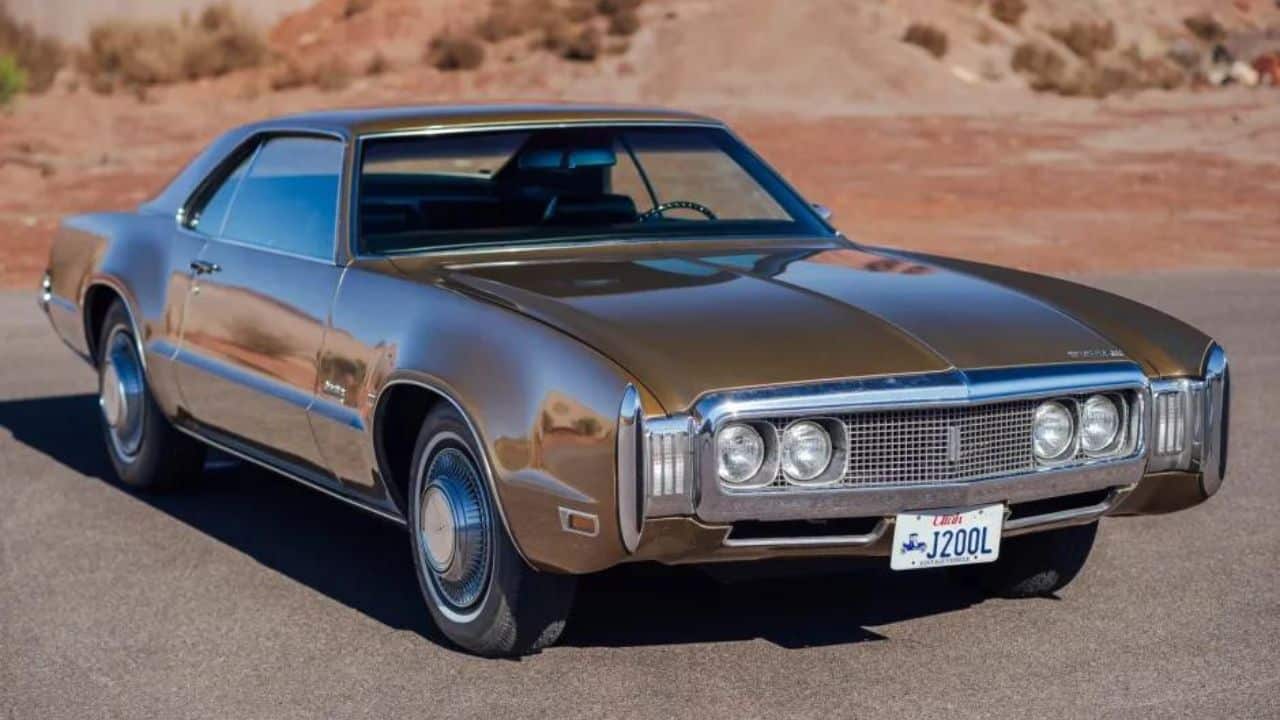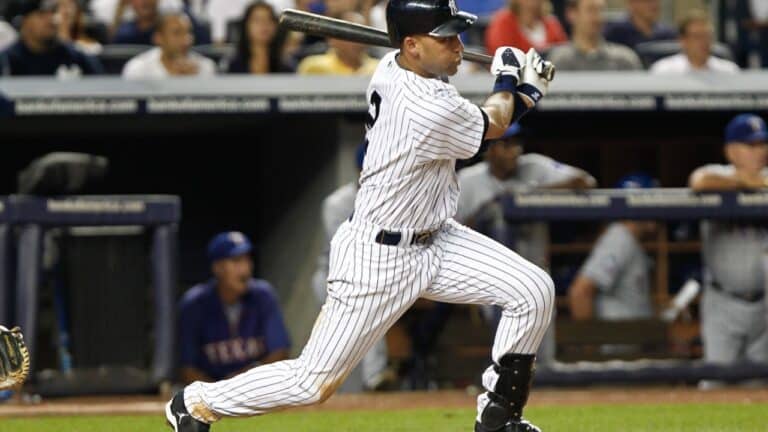13 Underappreciated Oldsmobile Muscle Cars Respected by Gearheads

We understand “underappreciated” might feel like the wrong word here. Almost all cars on this list are respected names, but only to gearheads and seasoned enthusiasts. It’s our way of saying these cars deserve even more recognition than they do in the muscle car world.
If you don’t agree with some or even all the entries on this list, that’s probably — most likely — because you’re a confirmed gearhead. Even the Mustang II, accused of betraying the Mustang’s young legacy, has fans and aficionados who dote on it. However, we’re quite sure the average car person tends to overlook every Olds in this list.
We know this because the Camaros, Mustangs, and Chargers dominate conversations about the golden age of American muscle cars. Our message today is that ‘ol Oldsmobile contributed a few underappreciated yet remarkable models to the glorious muscle car era, especially these 13.
Oldsmobile 4-4-2 W-30 (1970-1971)

That’s the high-performance version of the popular Oldsmobile 442. The W-30 is a performance package we reckon is good enough to be a standalone brand, which is exactly what happened with the 442 in 1970. The 442 wasn’t always a standalone model.
It started as an optional performance package for the Cutlass and F-85, with the numbers representing a 4-barrel carburetor, 4-speed manual transmission, and dual exhausts.
So, the W-30 represented a further development on Oldsmobile performance, with the package bringing a 370-hp 7.5-liter (455 cu-in) V8 producing 500 lb-ft of torque. Even with the output slightly reduced the following year, the W-30 still wasn’t a pushover.
Oldsmobile 4-4-2 Hurst/Olds (1968-1972)

When Hurst Performance predictably turned its attention to the Oldsmobile 442, the result was a limited-edition 442 powered by a more powerful version of the 455 V8 engine, producing 390-hp at 5,000 rpm.
This Five-year collaboration with Oldsmobile opened a window for distinctive styling cues such as a dual-scooped hood, rear spoiler, and unique black-and-white paint scheme with red pinstriping.
The 1970 Hurst/Olds 442 introduced the famous “winged” rear spoiler. 1972 marked the final year for the Hurst/Olds first generation. The higher-output 7.5-liter Rocket V8 was accompanied by a revised front and rear bumper design for this year.
Oldsmobile Vista Cruiser 442 (1969-1970)

Hear us out before you scream, “Liar, Oldsmobile never made a 442 Vista Cruiser.” Yep, there was nothing like that from the factory, but Hurst did something that crazy using the W-30 hardware, particularly with the ‘72 models for that year’s Indy 500. We’d have made that clear in the heading, but Hurst wasn’t the only one who did this.
There were custom and dealer-modified Vistas equipped with 442 hardware. Oldsmobile produced the Vista Cruiser between 1964 and 1977. The wagon had this remarkable skylight roof over the second-row seating area that optimized the interior space and visibility. It was a member of the midsize Oldsmobile Cutlass family line, which is probably why Hurst thought, “Why not?”
It was the perfect family mover, especially with the elevated greenhouse with a panoramic sequence of roof windows reinforcing its “family-friendly” nature. So, most people couldn’t tell the difference with the 442 muscle car performance package.
1970 Oldsmobile Cutlass Rallye 350

If there were an Oldsmobile muscle car truly underappreciated, it would be the Cutlass Rallye 350. That’s usually the story when you’re a cheaper version of a popular model, although the Rallye 350 offered affordable performance.
Oldsmobile aimed it at younger drivers with no money but craving the muscle car experience. Its motivation came from a 5.7-liter (350 cu-in) V8 with a 4-barrel carburetor and a dual-exhaust system. It produced 310-hp and 390 lb-ft of torque, translating to less power than the larger engines of the era but beyond respectable for the money.
The young ‘uns could pair it with a 4-speed manual or 3-speed automatic. The car stood out with its vibrant Sebring Yellow paint coating every inch of the exterior — bumpers and wheels included.
1972 Hurst/Olds Pace Car

This one deserves an extraordinary place in America’s muscle car history. It was a special edition Indy 500 pace car based on the Cutlass Supreme and produced collaboratively between Oldsmobile and Hurst Performance.
For the 1970 Indianapolis 500, the Hurst/Olds Pace Car rendered its duties in Cameo White paint with Firefrost Gold stripping with black accent stripes. The heart was the 7.5-liter (455 cu-in) V8 producing approximately 270-hp. It benefited from the Hurst Dual-Gate automatic transmission and a Ram Air hood for proper ventilation. Only 629 were built and made available to the public.
Oldsmobile F-85 W-31 (1968-1970)

The F-85’s transformation in seven years is satisfying to watch. It was born in 1961 on the marque’s then-new Y-body platform and, by 1964, shifted to the A-body architecture that effectively transformed it into a midsize car.
The F-85’s evolution peaked in the 1968 model year. Still underpinned by the A-body platform, it had adapted to the golden age of American performance and morphed into a proper muscle car, with virtually all traces of its roots as a conservative family sedan erased.
As if to reinforce this transition, Oldsmobile accompanied this radical transformation with an optional W-31 high-performance package. The highlight was an upgraded version of the 5.7-liter (350 cu-in) V8 with high-lift camshaft, heavy-duty valve springs, and updated carb and high-rise aluminum intake manifold.
Oldsmobile 4-4-2 W-27 (1968-1972)

The W-27 package lured performance addicts with its 442-exclusive lightweight aluminum rear differential housing. It is underappreciated because it was rare, leaving the rest of the Cutlass crowd content with the 442 — itself a high-performance package.
Oldsmobile briefly rolled out the W-27 between 1968 and 1972 to enhance the 442’s performance delivery. The heart was the same 6.6-liter (400 cu-in) V8, producing around 350-hp and 440 lb-ft of torque.
Yep, that’s the same as the 442 engine package, but the W-27 wasn’t about the powerplant, instead focusing on the rear axle assembly to improve performance. It used an aluminum assembly that lightened the car’s rear end by approximately 22 pounds. The result was optimized weight distribution, heat dissipation, and handling. The W-27 barely touched anything else — not the powerplant, drivetrain, or cosmetics.
1970 Oldsmobile Cutlass SX

The SX sought an exclusive chair in the Cutlass family tree by combining the Cutlass performance with the luxury-oriented Oldsmobile 88 platform. It is a rare 442 alternative known for its performance and sporty character. Specifically, the SX was a ‘more-performance’ variant of the Cutlass Supreme.
It doesn’t get enough respect because it didn’t benefit from the 442’s signature aggressive styling cues — no air induction hoods and body strippings — just muscle car power. It did get a cutout rear bumper and exhaust trumpets, plus identifying SX badges in the right places. Underneath hides the 442’s Rallye suspension.
Its heartbeat with the same 7.5-liter (455 cu-in) V8 found in other high-performance Olds of the era, producing 365-hp and 500 lb-ft of torque. The transmission was also the same 4-speed manual and Turbo-Hydramatic 400 automatic options. Oldsmobile offered the SX for the 1970 and 1971 model years only.
Oldsmobile Starfire (1961-1966)

The Starfire was a long-running luxury line that Oldsmobile offered from as far back as 1954 until 1980. They’re not muscle cars, and they didn’t run continuously. It debuted in 1954 as a limited-edition convertible and, by the following year, continued as the Oldsmobile 88’s luxury model, special trim and all.
It continued this way until 1957 and then reappeared in 1961 as a full-size, high-performance luxury coupe. That’s the version of the Starfire we reckon deserves more attention in the muscle car world. It’s not a blue-blooded muscle car, but it had the characteristics, particularly its 6.5-liter (394 cu-in) V8 producing 330-hp, later updated to 345-hp.
The powerplant often married a high-performance automatic transmission. The Starfire was, in a nutshell, an Olds aimed at people looking for a blend of luxury and performance as opposed to the raw, stripped-down performance of traditional 442s and brands like the Pontiac GTO.
Oldsmobile 4-4-2 W-29 (1968-1969)

Here’s the lowdown. The W-29 was an option code indicating the 442 package before becoming a standalone model. In other words, the W-29 was the 442 performance option for the Oldsmobile F-85 and Cutlass. It was offered between 1964 and 1967 before the 442 went solo in 1968.
As much as one might be tempted to overlook those prior models, we remember the 442 evolved into a standalone model in the first place because it was so good as a performance package on the Cutlass series. The W-29’s heart expanded to a 400 cu-in V8 in 1968, producing 350 to 360-hp.
Oldsmobile Delta 88 Royale Brougham (1972-1973)

We can see how the missing fastback styling and aggressive front fascia made it easy to overlook the Royale Brougham, specifically the 1972–‘73 models. The Delta 88 was a whelp of the Oldsmobile 88 series offered since as far back as 1949 until as recently as 1999.
Being in production that long meant it went through design changes and updates over the years. It also made it easy to blink and miss a standout version in the series, such as the Royale Brougham.
The Royale Brougham was a high-end trim of the full-size Delta 88 offered in both 4- and 2-door variants in coupe and convertible bodies. It wasn’t a traditional muscle car, but it had the muscle car spirit, thanks to its range of V8 engines, most notably the 5.7- and 7.5-liter Rocket V8s with varying outputs depending on the state of tune.
Oldsmobile Toronado GT (1968-1970)

The GT was a sportier version of the Toronado luxury coupe produced from 1968 to 1970. Neither the standard Toronado nor the sportier GT were traditional muscle cars, but the GT offered additional performance features worthy of the attention of muscle car fans.
The Toronado was among the pioneers of FWD American-made series-produced cars, at least not since the 1930s Cord.
Enter the GT version in 1968 with a muscle car-worthy 375-hp 7.5-liter V8 generating 510 lb-ft of torque, resulting in sportier styling and higher performance without compromising the nameplate’s luxury characteristics. For the 1970 model year, the output was updated to 400 hp, thanks to a higher compression ratio.
Oldsmobile Jetstar I (1964-1965)

We round up this article with another regular Olds that deserves better than being overlooked by muscle car fans. It was a mid-1960s full-size car that Oldsmobile offered as a cheaper alternative to the Starfire luxury car.
However, the Jetstar rocked some potent mills that could very well draw the attention of performance freaks, including the 6.5-liter “Ultra High Compression” Skyrocket V8 producing 345-hp and 440 lb-ft of torque. The standard shifter was a 3-speed Turbo Hydra-Matic automatic. The Jetstar 1 was available for just two years, between 1964 and 1965.





